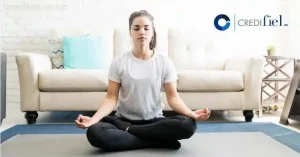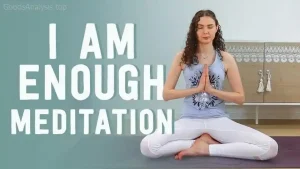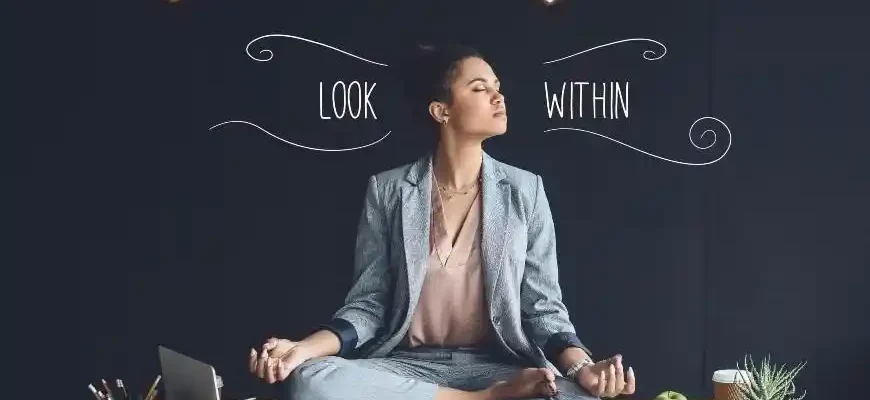Meditation has become a buzzword in today’s fast-paced world, and for good reason. Research backs up its many benefits, ranging from improved mental health to better sleep and even enhanced physical health. But if you’re new to the practice or have tried before without success, starting might feel like a daunting task. Don’t worry—you’re not alone. Many people, regardless of age or experience, have struggled with beginning or sticking to a meditation routine. But the good news is, meditation is a skill anyone can learn, and with the right approach, you’ll soon experience its transformative benefits.
Let’s dive into the science, practical steps, and personal tips to help you get started on your meditation journey.
The Science Behind Meditation
Before we go any further, let’s establish why meditation is worth your time. Studies show that meditation can have profound effects on both your brain and body. Here’s some solid scientific research to back up the claims:
- Mental Health Benefits: Research published in JAMA Internal Medicine (2014) found that mindfulness meditation programs significantly reduce symptoms of anxiety, depression, and pain.
- Stress Reduction: A study from Harvard Medical School (2016) showed that regular meditation can lower cortisol levels (the stress hormone) and activate the relaxation response.
- Improved Focus and Attention: Meditation has been shown to increase gray matter in the brain, particularly in areas related to memory, learning, and emotion regulation. In fact, a study by the University of California (2012) found that just eight weeks of meditation could boost focus and attention.
- Better Sleep: Meditation helps with sleep by relaxing the mind and reducing the mental chatter that can keep you awake. The National Sleep Foundation supports this, indicating that mindfulness meditation can help people fall asleep faster and improve sleep quality.
- Physical Health: Meditation also has positive effects on physical health. It can lower blood pressure, improve immune function, and even reduce chronic pain. Studies in the Journal of Alternative and Complementary Medicine (2011) confirmed these findings.
Starting Your Meditation Practice
Now, onto the practical side of things. Here’s a simple roadmap to get you started.
- Set Realistic Expectations
Start with the understanding that meditation is a skill, not a one-time fix. You won’t experience a “wow” moment of inner peace after just one session. It takes practice, patience, and consistency. Be kind to yourself if your mind wanders—it’s natural! - Create a Comfortable Environment
Find a quiet place where you won’t be disturbed. This could be a corner in your living room, a peaceful spot in a park, or even a comfortable chair at your desk. Keep your environment free from distractions, and consider adding elements that promote relaxation, such as dim lighting, cushions, or soft music. - Choose the Right Time
Choose a time of day when you’re least likely to be interrupted. Early mornings or late evenings work best for many people. The key is to choose a time that’s consistent and convenient for you. - Start with Short Sessions
If you’re new to meditation, start with just 5-10 minutes a day. As you get comfortable, you can gradually increase the time. The goal is not to meditate for hours on end but to build a regular habit. - Focus on Your Breath
One of the simplest and most effective forms of meditation is breath awareness. Sit comfortably, close your eyes, and focus on the sensation of your breath coming in and out. If your mind starts to wander, gently bring it back to your breath. This is where mindfulness comes in—you’re training your mind to stay present. - Try Guided Meditations
For beginners, guided meditations can be incredibly helpful. There are plenty of apps and websites that offer free or paid guided sessions. Apps like Headspace, Calm, and Insight Timer provide a range of options, from short sessions to longer ones, with a variety of themes, including stress reduction, sleep improvement, and self-compassion. - Consider Different Meditation Styles
Not all meditation practices are the same. There are different types to explore, depending on your goals and preferences. Here are a few options:

- Mindfulness Meditation: Focus on the present moment and observe your thoughts without judgment.
- Loving-Kindness Meditation (Metta): Focus on cultivating compassion and love, both for yourself and others.
- Body Scan Meditation: Pay attention to the sensations in each part of your body, starting from your toes and working your way up.
- Zen Meditation: Also known as Zazen, this is a seated practice focused on posture and breathing.
- Transcendental Meditation: A technique that uses mantras to help calm the mind and achieve a state of restful alertness.

- Be Patient and Non-Judgmental
Don’t worry about whether you’re “doing it right.” There is no perfect way to meditate. The process is about cultivating awareness, and that takes time. Be patient with yourself, and when your mind wanders (which it will), simply return your focus to the breath, without judgment.
Common Pitfalls and How to Overcome Them
Starting a meditation practice isn’t always smooth sailing. Here are some of the common challenges that beginners face, and how to deal with them:
- Too Many Thoughts: Many new meditators feel frustrated because their mind is “too busy” or “too noisy.” The truth is, everyone’s mind is busy! The goal of meditation is not to stop thoughts but to notice them without getting attached. Gently bring your focus back to your breath whenever your mind wanders.
- Physical Discomfort: Sitting still can be uncomfortable, especially in the beginning. If you’re struggling with discomfort, consider using a cushion or chair, or even meditating while lying down. The key is to find a position that works for you and that you can maintain comfortably.
- Lack of Time: It’s easy to feel like you’re too busy to meditate, but if you can find just 5-10 minutes a day, that’s enough. Start small, and as meditation becomes a habit, you’ll likely find more time for it.
- Unrealistic Expectations: Some people expect immediate results, but meditation is a long-term practice. Don’t expect to feel deeply relaxed or enlightened after just one session. Results compound over time.
The Rewards: What to Expect After Consistent Practice
With regular meditation, you’ll begin to notice subtle shifts in your life. The effects are cumulative, so be patient and observe the changes. Here are some things you might experience:
- Improved Emotional Resilience: With time, you’ll notice that you’re better able to handle stress, frustration, and negative emotions. Meditation strengthens your ability to respond to challenges rather than react impulsively.
- Better Mental Clarity: As you practice mindfulness, you’ll become better at focusing and staying present, which can improve decision-making, productivity, and creativity.
- Enhanced Relationships: When you practice meditation and cultivate qualities like compassion and patience, you may find that your relationships improve, both with others and with yourself.
- Physical Health Benefits: From lowered blood pressure to better sleep and reduced stress, the physical benefits of meditation are well-documented. Over time, meditation can even contribute to a longer, healthier life.

Real People, Real Experiences
Here’s what a few people from different walks of life had to say about starting their meditation practice:
- Sophie, 52, USA: “I started meditating to cope with anxiety. At first, it was hard to sit still, and I felt like I was doing it wrong. But after a few weeks, I began to feel more grounded. My sleep improved, and I felt less stressed at work. It’s become a non-negotiable part of my morning routine.”
- Carlos, 36, Spain: “I tried meditation on and off for years, but I never really got into it until I discovered guided sessions. The apps really helped me stay on track. Now, I meditate for 15 minutes each morning, and I’ve noticed a huge difference in my overall mood and energy levels.”
- Ayesha, 29, India: “I began meditating to deal with stress and low energy. At first, I didn’t feel much, but after a month, I realized I was handling work pressure much better. It also helped me sleep better, and I’m more focused during the day.”
- John, 65, UK: “As someone who’s dealt with chronic pain, meditation has been a game-changer. It helps me stay present instead of getting overwhelmed by discomfort. I use mindfulness techniques to distract myself during painful moments, and it’s really made a difference.”
- Liu, 48, China: “Meditation was a strange concept to me at first, but I’ve found it so helpful for managing my emotions. It’s given me a deeper sense of self-awareness and has really improved my relationships with my family.”
Final Thoughts
Meditation is a powerful tool for improving mental, emotional, and physical well-being. The key is to start small, be consistent, and most importantly, be patient with yourself. The benefits don’t happen overnight, but if you stick with it, you’ll likely find that meditation becomes an invaluable part of your daily life. Remember, everyone’s journey is different, so don’t compare yourself to others. Just take it one breath at a time.
Good luck on your meditation journey—be kind, stay curious, and let your practice evolve at its own pace.









